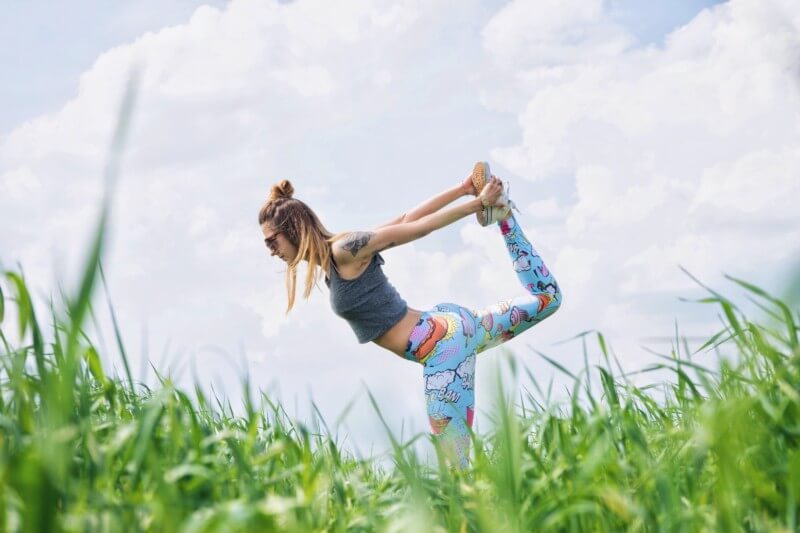
In a 2011 study with mice, Dr. Mark Tarnopolsky took genetic testing to another level. All the mice had a genetic disease to age prematurely. Half of the mice were sedentary and the other half were running three times a week on the treadmill.
The result:
The first half were dying off towards the end of the experiment. Whereas, the second half were just like other normal mice. They were able to prevent pre-maturing in animals with exercise!
I know we aren’t mice, but the evidence behind exercise is outstanding.
The problem is that only 20% of Americans are getting the recommended 150 minutes of strength and cardiovascular physical activity per week. More than half of all baby boomers report doing no exercise whatsoever, and 80.2 million Americans over the age of 6 are entirely inactive. That is astounding!
Low activity puts you at a higher risk for cancer, heart disease, Alzheimer’s and even early death. It can worsen arthritis symptoms, increase lower-back pain, and lead to depression and anxiety, not to mention a sickly looking complexion.
Inherently, humans are bad at assessing the long-term benefits and risks of their lifestyle choices. Terms like exercise is “good for you” or “good for your heart” aren’t powerful enough to motivate most people. It sounds too much like a chore. As humans, we are motivated from rewards. That is why Dr. Tarnopolsky likes to use more powerful terms linking them to rewards, such as “exercise causes slower aging, better mood, less chronic pain, stronger vision, etc.”

Back in 400 BC…
Back in the day, the aim was not to treat and cure disease, it was to keep people healthy. They did this through diet and exercise. Hippocrates said “eating alone will not keep a man well, he must also take exercise”.
Nowadays, things are very different. Let’s take a look at our children. Childhood obesity has soared since 1999. The best kids in physical activity are allowed to play sports, where the average student is left to sit on the bleachers. Thus, physical activity is no longer the medicine of the masses, but the privilege of elite athletes. Gym classes have been cut from the curriculum from most school. Nearly half of high school students don’t have a weekly PE class and only 15% of elementary schools require PE at least three days a week for the school year. Thus, giving us deficit disorders.
There is good news!
In 2017, the NIH (National Institute of Health), will launch a six-year, $170-million study with a group of about 3,000 sedentary people, ranging in age from children to the elderly. They will be collecting blood, fat, and muscle, before and after exercise. There will also be a control group that doesn’t exercise. They hope to identify every single molecule in the body that’s tweaked or turned on by exercise.

What action can you take to improve your health?
There are two types of exercise: aerobic and strength training.
During aerobic, your breathing speeds up, blood flows faster, the heart pumps more blood, thus shooting oxygen out to the tissues in the rest of the body. About 50% of the population does this.
Strength training is used to build muscle and strengthen bones. In fact, you really only need to use your body weight as resistance. Activities such as tai chi, yoga, and pilates are phenomenal ways to do strength training.
What are the right exercises?
It doesn’t have to be shooting a ball through a basket. It can be shoveling, mowing the grass, raking leaves, washing the car, skipping, rebounding – any physical activity that includes movement.
If you are able to push yourself, push hard. It has been shown that 10 minutes of rigorous exercise can be equivalent to 50 minutes of moderate exercise. There are two ways of doing this:
- HIIT or High Intensity Interval Training
- HIST or High Intensity Interval Training
What’s even more amazing is that you don’t even need a gym to become healthy. Most people think now because of the health-club and fitness movement, that in order to exercise you need to join a fancy club and wear fancy clothes. That is not true. The best exercise doesn’t require a gym membership.

6 Ways to Workout:
Cardio
- Walking – with the lowest quit rate of any type of exercise, walking improves memory, well-being, heart health, and even creativity.
- Cycling – cycling has been shown to increase brain connectivity, and doing it at any intensity improves a depressed mood.
- Running – Going for a run improves sleep and makes bones stronger. Even just a bit of jogging – 5 to 10 minutes a day – is linked to a longer life.
Strength
- Yoga – lift your own body weight and flow through intense poses and yoga will give you strength with a side of mindfulness and stress relief.
- Weight training – a cheap pair of weights will build muscle and strengthen bone at any age. As an alternative try resistance bands.
- Tai chi – these slow, gentle movements might not look like much, but tai chi strengthen the back, abs and upper and lower body. It also relieves pain.
Check out more from the author to learn how to enhance your mindset on exercise.





